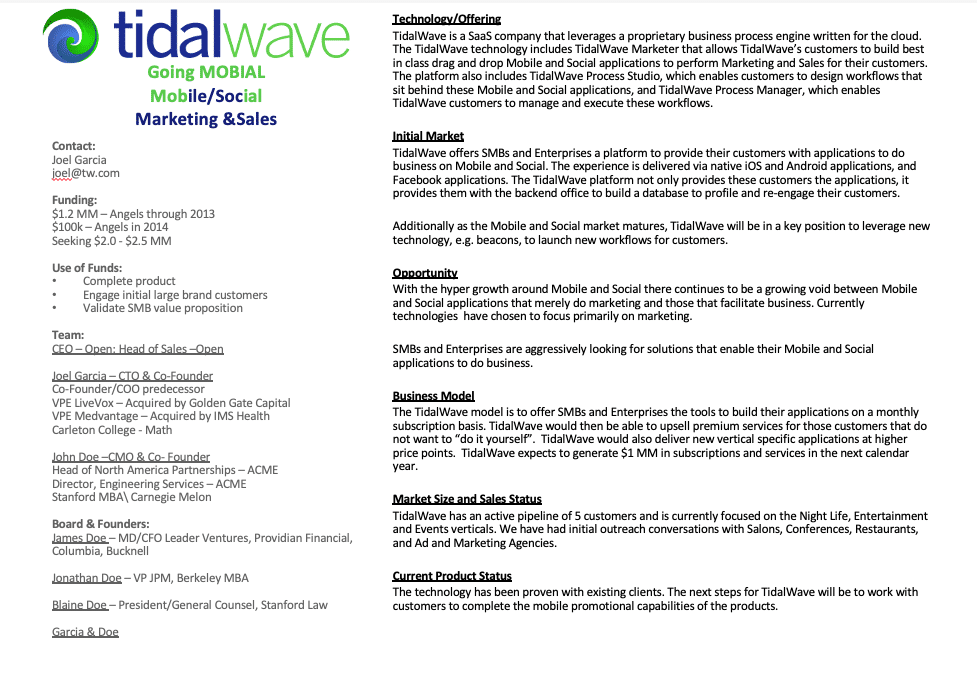What is a company one-pager?
A company one-pager is a single-page summary of your company that plays a vital role in raising funds for early-stage startups. Most potential entrepreneurs are familiar with the concept of the pitch deck, but prior to even getting your pitch deck read by an investor, an investor will invariably ask for the one-pager.
The one-pager is a simple, high-level overview explaining the problem that your business is trying to solve. Investors will see your one-pager as an executive summary that highlights issues central to your business.
What are the components of a one-pager?
The one-pager needs to be a brief outline of your company emphasizing what makes your business rise above. The goal is to focus on the unique values that your business brings to the market. The one-pager must include:
- Business identity: The company’s name, logo, and tag line needs to be clearly stated. I prefer to put the name, logo, and tagline in the upper left-hand corner.
- Contact Info: The person the investor should contact to learn more about the opportunity. First name, last name, email, and phone number. The email should be the name of the company.
- Funding: Have you previously acquired funding? If so, how much, and at what valuation? How much funding are you currently seeking, and at what valuation?
- Use of Funds: If the potential investor is to provide funding in your round, where will the money go? Sales and marketing of the product?
- Team: Who is the CEO, CTO, and Chief Sales Officer? First name, last name, role, experience, and college education.
- Board: Who is on the Board? First name, last name, relationship to the company, and past experience. The Board matters!
- Technology Offering: What is unique about your technology offering? What makes you special?
- Initial Market: What market is your technology offering going to be sold into now?
- Opportunity: What is the overall opportunity for this type of product in the marketplace?
- Business Model: How will you make money? Will this be a subscription-based model that generates Monthly Recurring Revenues (MRR)?
- Market Size and Sales Status: What is the Total Available Market (TAM) in dollars? How many clients do you have now? How much revenue are you generating?
- Current Product Status: Where is the product in the software development life cycle? Do you have a minimum viable product (MVP)? An Alpha?
One-Pager Example
Effective one-pagers can quickly convert potential investors. Check out this example of TW Investment 1 Pager V1.1.

